
35 Legion Parkway
West Seneca,
New York 14224
U.S.A.

American Legion
Post 735

Marine Corp. League
Detachment 239
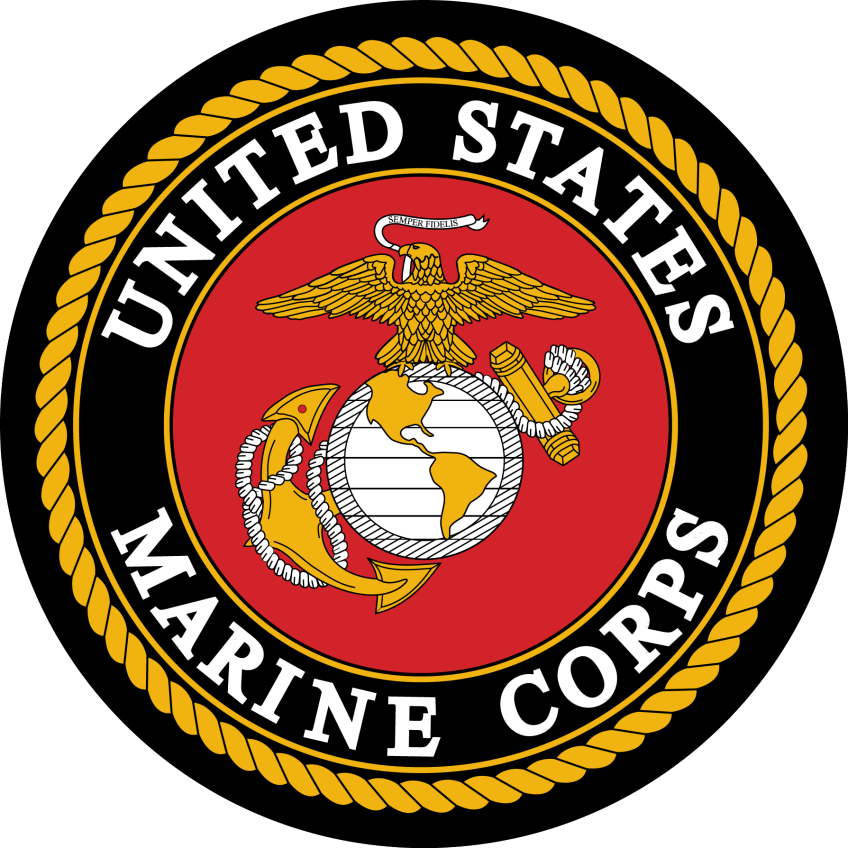
Veterans of Foreign Wars
VFW Post 8113
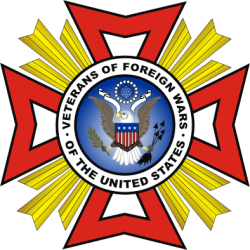
Navy Seabee Veterans
of America, Island X-5

AMVETS
Post 8113

82nd Airborne
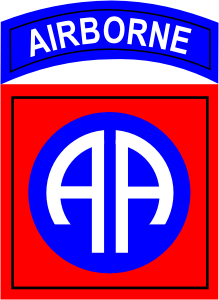

West Seneca Joint Veterans Committee |
|
Military History and Information
United States Military Branches
ARMY

The United States Army is the branch of the United States armed forces responsible for land-based military operations. It is the largest and oldest established branch of the U.S. military.
The U.S. Army was founded on 14 June 1775, when the Continental Congress authorized enlistment of riflemen to serve the United Colonies for one year.
MARINE CORPS.

The United States Marine Corps is the branch of the United States armed forces responsible for providing force projection from the sea, using the mobility of the United States Navy to rapidly deliver combined-arms task forces.
The United States Marine Corps was founded when Captain Samuel Nicholas formed two battalions of Continental Marines on 10 November 1775.
NAVY

The United States Navy is the naval warfare service branch of the United States armed forces. The United States Navy was officially founded on 13 October 1775,
when the Continental Congress authorized the outfitting of two vessels "of ten carriage guns...for a cruise of three months" against British supply ships.
AIR FORCE
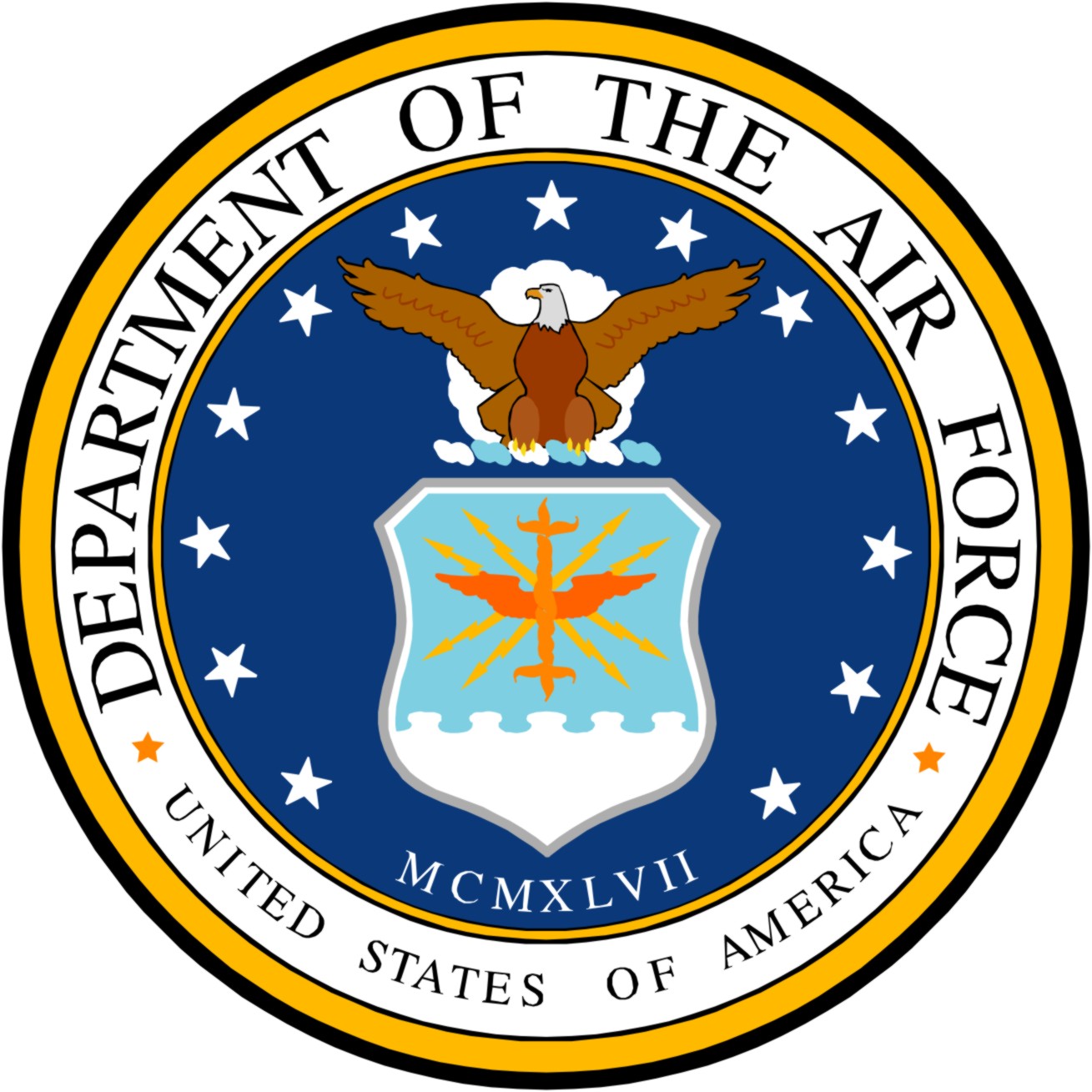
The United States Air Force is the lead aerial warfare and space warfare service branch of the United States armed forces.
Initially part of the United States Army, the United States Air Force was formed as a separate branch of the military on 18 September 1947.
COAST GUARD
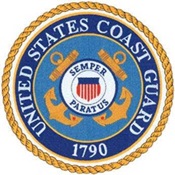
The Coast Guard is a maritime, military, multi-mission service unique among the military branches for having a maritime law enforcement mission (with jurisdiction in both domestic and international waters)
and a federal regulatory agency mission as part of its mission set. The United States Coast Guard was founded by Alexander Hamilton as the Revenue Cutter Service on 4 August 1790.
SEABEES

On 5 January 1942, Rear Admiral Ben Moreell created the United States Seabees when he received authority from the Bureau of Navigation to recruit men from the civilian construction trades for assignment to a naval construction regiment composed of three naval construction battalions.
The Seabees were credited for constructing all of the essentials for forward-base facilities, and playing a significant role in the success of the World War II and other conflicts that followed.
POW/MIA (Prisoner of War/Missing in Action)Flag
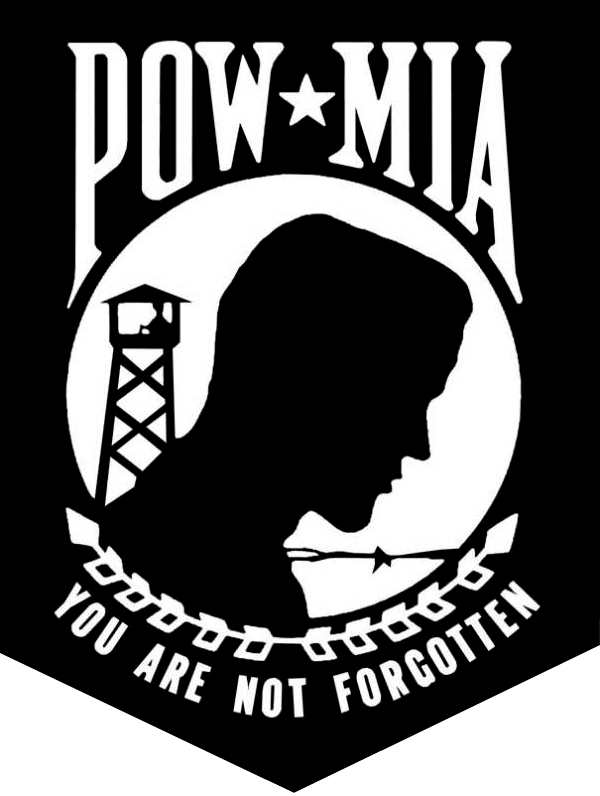
In 1971, Mrs. Michael Hoff, an MIA (designation given to a soldier who is Missing In Action) wife and member of the National League of Families, recognized the need for a symbol of our POW/MIAs. (POW is the designation given to those serving as Prisoners Of War, held by the enemy.)
Mrs. Hoff contacted Norman Rivkees, who had made a banner for the newest member of the United Nations, as a part of their policy to provide flags to all UN member nations. Mrs. Hoff found Mr. Rivkees very sympathetic to the POW/MIA issue, and he, along with his advertising agency, designed a flag to represent our missing men and women. Following League approval, the flags were manufactured for distribution.
Concerned groups and individuals have altered the original POW/MIA flag many times; the colors have been switched from black with white to red, white, and blue, to white with black. Such changes, however, are insignificant. The importance lies with the continued visibility of this symbol, a constant reminder of the plight of America's POW/MIAs.
On March 9, 1989, an official League flag, which flew over the White House on 1988 POW/MIA Recognition Day, was installed in the U.S. Capitol Rotunda as a result of legislation passed overwhelmingly during the 100th Congress. The Leadership of both Houses hosted the installation ceremony in a demonstration of bipartisan Congressional support.
On 10 August 1990, Congress recognized the National League of Families POW/MIA Flag and designating it "as a symbol of our Nation's concern and commitment to resolving as fully as possible the fates of Americans still prisoner, missing and unaccounted for in Southeast Asia, thus ending the uncertainty for their families and the Nation."
Beyond Southeast Asia, it has been a symbol for POW/MIAs from all U.S. wars.
According to Section 1082 of the 1998 Defense Authorization Act, the POW/MIA flag must be flown on specific days at certain federal buildings. Those days are:
- Armed Forces Day, the third Saturday in May
- Memorial Day, the last Monday in May
- Flag Day, June 14th
- Independence Day, July 4th
- POW/MIA Recognition Day, the third Friday in September
- Veterans Day, November 11th
American Revolutionary War
American War of Independence 1775 – 1783
In April 1775, British troops were sent to seize munitions stored by the American colonial militia at Concord and Lexington Massachusetts. When the British troops encountered the minutemen, shots were exchanged and several minutemen killed. With the battles of Lexington and Concord, the Revolutionary War had begun.
The thirteen colonies established a regular army on 14 June 1775, appointing George Washington as Commander–in–Chief. America declared its independence on 4 July 1776, as Thomas Jefferson drafted the Declaration of Independence. The siege of Yorktown in 1781 ended in the surrender of a substantial British army which marked the end of major
British military operations in America. With the aid of France and several American victories, the British started pulling their troops from America. The American colonies won complete independence from Great Britain with the signing of the Treaty of Paris on 3 September 1783.
War of 1812
Second War of Independence 1812 – 1815
The War of 1812 was a military conflict between the United States and Great Britain and its allies. The outcome resolved many issues which remained from the American War of Independence, but involved no boundary changes. The United States declared war in 1812 for several reasons, including British attempts to restrict U.S. trade, the Royal Navy’s impressment of American seamen and America’s desire to expand its territory which had been denied to them in the settlement ending the American Revolutionary War.
The war was fought in three principal theatres: on the sea where the British blockaded the Atlantic coast of the United States; land and naval battles fought on the American–Canadian frontier; and the American South and Gulf Coast also saw major land battles. The United States suffered many costly defeats at the hands of British, Canadian and Native American troops over the course of the war, including the burning of Buffalo on 30 December 1813 and the capture and burning of our nation’s capital, Washington, D.C.
in August 1814. American troops were able to repulse British invasions in New York and Baltimore boosting national confidence. The Treaty of Ghent was signed on 24 December 1814. Unaware of the treaty, General Andrew Jackson engaged and crushed the British at New Orleans on 8 January 1815.
Civil War
War between the States 1861 – 1865
In February 1861, seven Southern slave states, in a dispute over state’s rights and slavery issues, seceded from the United States and formed the Confederate States of America. Within two months, four additional Southern slave states declared their secession and joined the Confederacy. Twenty–three states remained loyal to the Union or “North”.
Hostilities began on 12 April 1861, when Confederate forces fired upon Fort Sumter, a key fort held by Union troops in South Carolina. After many lack–luster commanders for the North, President Abraham Lincoln named General Ulysses S. Grant as commander of all Union armies while General Robert E. Lee was selected as the General-in-Chief of the armies of the Confederate states.
Over four years, 237 named battles were fought, with many more minor actions and skirmishes. On 1 January 1863, President Abraham Lincoln issued the Emancipation Proclamation freeing all slaves in the Confederacy. In an attempted invasion of the North on 1 July to 3 July 1863, General Lee’s Confederate Army met the Union Army in Pennsylvania at the Battle of Gettysburg.
A costly Union victory signaled the beginning of the end to the Confederacy. On 9 April 1865, General Lee surrendered his Confederate Army to General Grant in the village of Appomattox Court House, ending the great civil war.
World War I
The Great War 1914 – 1918
World War I (WWI) was a global war centered in Europe that began on 28 July 1914 with two opposing alliances: the Allies (United Kingdom, France and the Russian Empire) and the Central Powers of Germany and Austria–Hungary. Although there were many causes of the war, the immediate trigger for war was the 28 June 1914 assassination of Archduke Franz Ferdinand of Austria, heir to the throne of Austria–Hungary.
The United States’ entry into World War I came in 6 April 1917 joining the forces allied against the Central Powers. American troops reached the battlefields of France in the spring of 1918, reinforcing the beleaguered Allied forces. Military tactics called for trench warfare and barbed wire defenses. Mustard and other types of gas warfare were used by both sides with disastrous results in life.
Years of trench warfare saw no major exchanges of territory. The naval battles of the Atlantic saw greater use of submarine warfare and bigger and faster battleships and cruisers. In July of 1918, the German Army attempted an advance known as the Second Battle of the Marne but was quickly halted by Allied forces. Heavy German losses lead to the eventual surrender of the German Army. On 11 November 1918,
at 5:00 am, an armistice with Germany was signed in a railroad carriage at Compiegne, France. At 11 am on 11 November 1918 – “the eleventh hour of the eleventh day of the eleventh month” – a ceasefire came into effect, signaling the end of the Great War.
World War II
Second World War 1939 – 1945
World War II (WWII) was a global war that involved more than 30 nations and was the deadliest and costliest war in history. In 1933, the Nazi Party under Adolph Hitler, seized power in Germany. After rapid militarization, Germany invaded Poland on 1 September 1939, plunging the world into war. Initially America remained neutral.
On a calm Sunday morning 7 December 1941, a day “that will live in infamy”; the naval base at Pearl Harbor, Hawaii was attacked by aircraft from the Japanese Imperial Navy. Within a few hours on that fateful morning, America lost over 2,400 Naval, Army, Marine and Army Air Corp personnel and more than 1,100 military personnel were injured
defending their ships and bases against the Japanese onslaught. War was declared against Japan and Germany quickly declared war on the United States. World War II was fought predominantly in Europe and across the Pacific and eastern Asia. The war pitted the Axis powers of Nazi Germany, Fascist Italy, and Imperial Japan against the Allied
nations of Great Britain, France, China, the United States, and Soviet Union. Faced with enemies in the Pacific region and in Europe, the United States had to fight on two fronts, with the defeat of Nazi Germany as the top priority. The Battle of Midway was the turning point against the Japanese Navy, while the bloody battles for the Philippines,
Iwo Jima and Okinawa liberated recaptured islands from the Japanese Army. In Europe, the Allies launched a large scale amphibious and airborne operation against Sicily, leading to the defeat of the Axis Powers in Italy. 6 June 1944 was the turning point of World War II against the Germans as the largest amphibious attack in history took place on
the beaches of Normandy, France. After securing a foothold in France, the Allies pushed onto Berlin, Germany where on 8 May 1945, Nazi Germany unconditionally surrendered to the Allies, ending the war in Europe. On 6 August and 9 August 1945, the United States dropped atomic bombs on the cities of Hiroshima and Nagasaki hastening the end of the
war against Japan. On 14 August 1945, Japan surrendered unconditionally to the United States and its Allies, effectively ending World War II.
- Battle of the Bulge
The Battle of the Bulge took place from 16 December 1944 through 25 January 1945 and was a major German offensive campaign launched through the densely forested Ardennes region of Wallonia in Belgium, France, and Luxembourg on the Western Front toward the end of World War II. Hitler planned the offensive with the primary goal to recapture the important harbor of Antwerp.
The surprise attack caught the Allied forces completely off guard. United States forces bore the brunt of the attack and incurred their highest casualties for any operation during the war. The battle also severely depleted Germany’s personnel, Luftwaffe aircradt and armored forces on the western front which Germany was largely unable to replace.
For more information on the Battle of the Bulge, press here.
Korean War
The Forgotten War 1950 – 1953
Korea was liberated from Japan in 1945 at the end of World War II, with the United States and its Allies occupying the territory to the south of the 38th Parallel and the Soviet Union the land to the north. In 1948, the Communists, under Kim Il-sung, took power in the north, while the south became democratic.
After several border skirmishes, North Korea invaded the south on 25 June 1950. The United Nations passed Resolution 83 which called for military assistance for South Korea and under the UN banner, President Harry Truman ordered American forces to defend South Korea. The North Korean military units drove their
forces into the port of Pusan, while UN commander General Douglas MacArthur launched a daring landing at Inchon in September 1950. The invasion by the UN forces broke the North Korean offensive and forced the northern forces back over the 38th parallel. In October 1950, Chinese forces entered the fighting on the
side of the North Koreans and pushed the UN regiments back to Seoul. In April 1951, General Matthew Ridgway replaced Douglas MacArthur and was able to drive the UN forces back across the 38th parallel. The war became basically a stalemate, as UN airpower continued to hammer the enemy while offensives on the ground were
relatively limited. Battles continued to rage over hills and high ground along the front. Engagements such as the Battles of Heartbreak Ridge, White Horse, Triangle Hill, and Pork Chop Hill brought about heavy causalities. Negotiations at Panmunjom brought about an armistice on 27 July 1953. Although the fighting ceased,
no formal peace treaty was concluded. Instead, both sides agreed to the creation of a demilitarized zone along the front, near the 38th Parallel.
Vietnam War
Second Indochina War 1955 - 1975
The Vietnam War was the prolonged struggle between the communist government of
North Vietnam and its allies in South Vietnam, known as the Viet Cong, against the
government of South Vietnam and its principal ally, The United States. Beginning in 1950,
American military advisors arrived in what was then French Indochina. After suffering a
decisive defeat at Dien Bien Phu, the French decided to pull out of Vietnam in 1954. United
States involvement escalated in the early 1960s, with troop levels tripling in 1961 and again
in 1962. U.S. involvement escalated further following the 1964 Gulf of Tonkin incident, in
which a U.S. destroyer clashed with North Vietnamese fast attack craft. The Gulf of Tonkin
Resolution gave the U.S. president authorization to increase U.S. military presence. Regular
U.S. combat units were deployed beginning in 1965. More than 3 million Americans served
in the Vietnam War. Operations crossed international borders: bordering areas of Laos and
Cambodia were heavily bombed by U.S. forces as American involvement in the war peaked
in 1968, the same year that the Communist side launched the Tet Offensive. The Tet
Offensive failed in its goal of overthrowing the South Vietnamese government but became
the turning point in the war. Tet was a military defeat for the Communists, yet a public
relations victory. Despite many years of massive U.S. military aid to South Vietnam, the
American public, distressed by mounting casualties, rising taxes and no prospect of a
solution in sight, called for an end to war. Direct U.S. military involvement finally ended on
15 August 1973 as a result of the Case–Church Amendment passed by Congress. The
capture of Saigon at the hands of the North Vietnamese Army in April 1975 marked the
end of the war, and North and South Vietnam were reunified the following year.
Iraq War
Second Persian Gulf War 2003 – 2011
The Iraq War was a conflict over Iraq’s alleged possession of weapons of mass
destruction (WMD) and its brutal and unstable dictator, Saddam Hussein. The war
consisted of two phases. In “Operation Iraqi Freedom”, a massive air bombardment was
launched simultaneous to a fierce ground war. A coalition force of troops from the
United States and Great Britain (with smaller contingents from several other countries)
invaded Iraq in March – April 2003. In a brief and conventionally fought war, the U.S. and
its allies, with superior fire–power, rapidly defeated Iraqi military and paramilitary forces.
After the capital city of Baghdad fell to coalition forces in April 2003, all major fighting
ceased. Following the drafting of a permanent constitution, Iraq’s first constitutional
government was formed in May 2006. Disposed President Saddam Hussein was
eventually captured and executed by the new Iraqi government. The U.S.–led occupation
of Iraq was constantly opposed by an insurgency, including al-Qaeda forces from
surrounding countries, trying to drive out the occupying forces and topple the newly
formed Iraqi government. After violence began to decline in 2007, the United States
gradually reduced its military presence in Iraq. In September 2010, the American
operational name was changed to “Operation New Dawn”, allowing the rebuilt Iraqi
army to fight the regional and sectarian violence that continued to spread throughout
the country. After lasting more then eight years, the Iraq War was declared over in
December 2011 and the last U.S. troops left Iraqi territory on 18 December 2011.
United States Military Branches
ARMY

The United States Army is the branch of the United States armed forces responsible for land-based military operations. It is the largest and oldest established branch of the U.S. military.
The U.S. Army was founded on 14 June 1775, when the Continental Congress authorized enlistment of riflemen to serve the United Colonies for one year.
MARINE CORPS.

The United States Marine Corps is the branch of the United States armed forces responsible for providing force projection from the sea, using the mobility of the United States Navy to rapidly deliver combined-arms task forces. The United States Marine Corps was founded when Captain Samuel Nicholas formed two battalions of Continental Marines on 10 November 1775.
NAVY

The United States Navy is the naval warfare service branch of the United States armed forces. The United States Navy was officially founded on 13 October 1775, when the Continental Congress authorized the outfitting of two vessels "of ten carriage guns...for a cruise of three months" against British supply ships.
AIR FORCE

The United States Air Force is the lead aerial warfare and space warfare service branch of the United States armed forces. Initially part of the United States Army, the United States Air Force was formed as a separate branch of the military on 18 September 1947.
COAST GUARD

The Coast Guard is a maritime, military, multi-mission service unique among the military branches for having a maritime law enforcement mission (with jurisdiction in both domestic and international waters) and a federal regulatory agency mission as part of its mission set. The United States Coast Guard was founded by Alexander Hamilton as the Revenue Cutter Service on 4 August 1790.
SEABEES

On 5 January 1942, Rear Admiral Ben Moreell created the United States Seabees when he received authority from the Bureau of Navigation to recruit men from the civilian construction trades for assignment to a naval construction regiment composed of three naval construction battalions. The Seabees were credited for constructing all of the essentials for forward-base facilities, and playing a significant role in the success of the World War II and other conflicts that followed.
POW/MIA (Prisoner of War/Missing in Action)Flag

- Armed Forces Day, the third Saturday in May
- Memorial Day, the last Monday in May
- Flag Day, June 14th
- Independence Day, July 4th
- POW/MIA Recognition Day, the third Friday in September
- Veterans Day, November 11th
In 1971, Mrs. Michael Hoff, an MIA (designation given to a soldier who is Missing In Action) wife and member of the National League of Families, recognized the need for a symbol of our POW/MIAs. (POW is the designation given to those serving as Prisoners Of War, held by the enemy.) Mrs. Hoff contacted Norman Rivkees, who had made a banner for the newest member of the United Nations, as a part of their policy to provide flags to all UN member nations. Mrs. Hoff found Mr. Rivkees very sympathetic to the POW/MIA issue, and he, along with his advertising agency, designed a flag to represent our missing men and women. Following League approval, the flags were manufactured for distribution.
Concerned groups and individuals have altered the original POW/MIA flag many times; the colors have been switched from black with white to red, white, and blue, to white with black. Such changes, however, are insignificant. The importance lies with the continued visibility of this symbol, a constant reminder of the plight of America's POW/MIAs.
On March 9, 1989, an official League flag, which flew over the White House on 1988 POW/MIA Recognition Day, was installed in the U.S. Capitol Rotunda as a result of legislation passed overwhelmingly during the 100th Congress. The Leadership of both Houses hosted the installation ceremony in a demonstration of bipartisan Congressional support.
On 10 August 1990, Congress recognized the National League of Families POW/MIA Flag and designating it "as a symbol of our Nation's concern and commitment to resolving as fully as possible the fates of Americans still prisoner, missing and unaccounted for in Southeast Asia, thus ending the uncertainty for their families and the Nation." Beyond Southeast Asia, it has been a symbol for POW/MIAs from all U.S. wars.
According to Section 1082 of the 1998 Defense Authorization Act, the POW/MIA flag must be flown on specific days at certain federal buildings. Those days are:
American Revolutionary War
American War of Independence 1775 – 1783
In April 1775, British troops were sent to seize munitions stored by the American colonial militia at Concord and Lexington Massachusetts. When the British troops encountered the minutemen, shots were exchanged and several minutemen killed. With the battles of Lexington and Concord, the Revolutionary War had begun. The thirteen colonies established a regular army on 14 June 1775, appointing George Washington as Commander–in–Chief. America declared its independence on 4 July 1776, as Thomas Jefferson drafted the Declaration of Independence. The siege of Yorktown in 1781 ended in the surrender of a substantial British army which marked the end of major British military operations in America. With the aid of France and several American victories, the British started pulling their troops from America. The American colonies won complete independence from Great Britain with the signing of the Treaty of Paris on 3 September 1783.
War of 1812
Second War of Independence 1812 – 1815
The War of 1812 was a military conflict between the United States and Great Britain and its allies. The outcome resolved many issues which remained from the American War of Independence, but involved no boundary changes. The United States declared war in 1812 for several reasons, including British attempts to restrict U.S. trade, the Royal Navy’s impressment of American seamen and America’s desire to expand its territory which had been denied to them in the settlement ending the American Revolutionary War. The war was fought in three principal theatres: on the sea where the British blockaded the Atlantic coast of the United States; land and naval battles fought on the American–Canadian frontier; and the American South and Gulf Coast also saw major land battles. The United States suffered many costly defeats at the hands of British, Canadian and Native American troops over the course of the war, including the burning of Buffalo on 30 December 1813 and the capture and burning of our nation’s capital, Washington, D.C. in August 1814. American troops were able to repulse British invasions in New York and Baltimore boosting national confidence. The Treaty of Ghent was signed on 24 December 1814. Unaware of the treaty, General Andrew Jackson engaged and crushed the British at New Orleans on 8 January 1815.
Civil War
War between the States 1861 – 1865
In February 1861, seven Southern slave states, in a dispute over state’s rights and slavery issues, seceded from the United States and formed the Confederate States of America. Within two months, four additional Southern slave states declared their secession and joined the Confederacy. Twenty–three states remained loyal to the Union or “North”. Hostilities began on 12 April 1861, when Confederate forces fired upon Fort Sumter, a key fort held by Union troops in South Carolina. After many lack–luster commanders for the North, President Abraham Lincoln named General Ulysses S. Grant as commander of all Union armies while General Robert E. Lee was selected as the General-in-Chief of the armies of the Confederate states. Over four years, 237 named battles were fought, with many more minor actions and skirmishes. On 1 January 1863, President Abraham Lincoln issued the Emancipation Proclamation freeing all slaves in the Confederacy. In an attempted invasion of the North on 1 July to 3 July 1863, General Lee’s Confederate Army met the Union Army in Pennsylvania at the Battle of Gettysburg. A costly Union victory signaled the beginning of the end to the Confederacy. On 9 April 1865, General Lee surrendered his Confederate Army to General Grant in the village of Appomattox Court House, ending the great civil war.
World War I
The Great War 1914 – 1918
World War I (WWI) was a global war centered in Europe that began on 28 July 1914 with two opposing alliances: the Allies (United Kingdom, France and the Russian Empire) and the Central Powers of Germany and Austria–Hungary. Although there were many causes of the war, the immediate trigger for war was the 28 June 1914 assassination of Archduke Franz Ferdinand of Austria, heir to the throne of Austria–Hungary. The United States’ entry into World War I came in 6 April 1917 joining the forces allied against the Central Powers. American troops reached the battlefields of France in the spring of 1918, reinforcing the beleaguered Allied forces. Military tactics called for trench warfare and barbed wire defenses. Mustard and other types of gas warfare were used by both sides with disastrous results in life. Years of trench warfare saw no major exchanges of territory. The naval battles of the Atlantic saw greater use of submarine warfare and bigger and faster battleships and cruisers. In July of 1918, the German Army attempted an advance known as the Second Battle of the Marne but was quickly halted by Allied forces. Heavy German losses lead to the eventual surrender of the German Army. On 11 November 1918, at 5:00 am, an armistice with Germany was signed in a railroad carriage at Compiegne, France. At 11 am on 11 November 1918 – “the eleventh hour of the eleventh day of the eleventh month” – a ceasefire came into effect, signaling the end of the Great War.
World War II
- Battle of the Bulge
The Battle of the Bulge took place from 16 December 1944 through 25 January 1945 and was a major German offensive campaign launched through the densely forested Ardennes region of Wallonia in Belgium, France, and Luxembourg on the Western Front toward the end of World War II. Hitler planned the offensive with the primary goal to recapture the important harbor of Antwerp. The surprise attack caught the Allied forces completely off guard. United States forces bore the brunt of the attack and incurred their highest casualties for any operation during the war. The battle also severely depleted Germany’s personnel, Luftwaffe aircradt and armored forces on the western front which Germany was largely unable to replace.
For more information on the Battle of the Bulge, press here.
Second World War 1939 – 1945
World War II (WWII) was a global war that involved more than 30 nations and was the deadliest and costliest war in history. In 1933, the Nazi Party under Adolph Hitler, seized power in Germany. After rapid militarization, Germany invaded Poland on 1 September 1939, plunging the world into war. Initially America remained neutral. On a calm Sunday morning 7 December 1941, a day “that will live in infamy”; the naval base at Pearl Harbor, Hawaii was attacked by aircraft from the Japanese Imperial Navy. Within a few hours on that fateful morning, America lost over 2,400 Naval, Army, Marine and Army Air Corp personnel and more than 1,100 military personnel were injured defending their ships and bases against the Japanese onslaught. War was declared against Japan and Germany quickly declared war on the United States. World War II was fought predominantly in Europe and across the Pacific and eastern Asia. The war pitted the Axis powers of Nazi Germany, Fascist Italy, and Imperial Japan against the Allied nations of Great Britain, France, China, the United States, and Soviet Union. Faced with enemies in the Pacific region and in Europe, the United States had to fight on two fronts, with the defeat of Nazi Germany as the top priority. The Battle of Midway was the turning point against the Japanese Navy, while the bloody battles for the Philippines, Iwo Jima and Okinawa liberated recaptured islands from the Japanese Army. In Europe, the Allies launched a large scale amphibious and airborne operation against Sicily, leading to the defeat of the Axis Powers in Italy. 6 June 1944 was the turning point of World War II against the Germans as the largest amphibious attack in history took place on the beaches of Normandy, France. After securing a foothold in France, the Allies pushed onto Berlin, Germany where on 8 May 1945, Nazi Germany unconditionally surrendered to the Allies, ending the war in Europe. On 6 August and 9 August 1945, the United States dropped atomic bombs on the cities of Hiroshima and Nagasaki hastening the end of the war against Japan. On 14 August 1945, Japan surrendered unconditionally to the United States and its Allies, effectively ending World War II.
Korean War
The Forgotten War 1950 – 1953
Korea was liberated from Japan in 1945 at the end of World War II, with the United States and its Allies occupying the territory to the south of the 38th Parallel and the Soviet Union the land to the north. In 1948, the Communists, under Kim Il-sung, took power in the north, while the south became democratic. After several border skirmishes, North Korea invaded the south on 25 June 1950. The United Nations passed Resolution 83 which called for military assistance for South Korea and under the UN banner, President Harry Truman ordered American forces to defend South Korea. The North Korean military units drove their forces into the port of Pusan, while UN commander General Douglas MacArthur launched a daring landing at Inchon in September 1950. The invasion by the UN forces broke the North Korean offensive and forced the northern forces back over the 38th parallel. In October 1950, Chinese forces entered the fighting on the side of the North Koreans and pushed the UN regiments back to Seoul. In April 1951, General Matthew Ridgway replaced Douglas MacArthur and was able to drive the UN forces back across the 38th parallel. The war became basically a stalemate, as UN airpower continued to hammer the enemy while offensives on the ground were relatively limited. Battles continued to rage over hills and high ground along the front. Engagements such as the Battles of Heartbreak Ridge, White Horse, Triangle Hill, and Pork Chop Hill brought about heavy causalities. Negotiations at Panmunjom brought about an armistice on 27 July 1953. Although the fighting ceased, no formal peace treaty was concluded. Instead, both sides agreed to the creation of a demilitarized zone along the front, near the 38th Parallel.
Vietnam War
Second Indochina War 1955 - 1975
The Vietnam War was the prolonged struggle between the communist government of North Vietnam and its allies in South Vietnam, known as the Viet Cong, against the government of South Vietnam and its principal ally, The United States. Beginning in 1950, American military advisors arrived in what was then French Indochina. After suffering a decisive defeat at Dien Bien Phu, the French decided to pull out of Vietnam in 1954. United States involvement escalated in the early 1960s, with troop levels tripling in 1961 and again in 1962. U.S. involvement escalated further following the 1964 Gulf of Tonkin incident, in which a U.S. destroyer clashed with North Vietnamese fast attack craft. The Gulf of Tonkin Resolution gave the U.S. president authorization to increase U.S. military presence. Regular U.S. combat units were deployed beginning in 1965. More than 3 million Americans served in the Vietnam War. Operations crossed international borders: bordering areas of Laos and Cambodia were heavily bombed by U.S. forces as American involvement in the war peaked in 1968, the same year that the Communist side launched the Tet Offensive. The Tet Offensive failed in its goal of overthrowing the South Vietnamese government but became the turning point in the war. Tet was a military defeat for the Communists, yet a public relations victory. Despite many years of massive U.S. military aid to South Vietnam, the American public, distressed by mounting casualties, rising taxes and no prospect of a solution in sight, called for an end to war. Direct U.S. military involvement finally ended on 15 August 1973 as a result of the Case–Church Amendment passed by Congress. The capture of Saigon at the hands of the North Vietnamese Army in April 1975 marked the end of the war, and North and South Vietnam were reunified the following year.
Iraq War
Second Persian Gulf War 2003 – 2011
The Iraq War was a conflict over Iraq’s alleged possession of weapons of mass destruction (WMD) and its brutal and unstable dictator, Saddam Hussein. The war consisted of two phases. In “Operation Iraqi Freedom”, a massive air bombardment was launched simultaneous to a fierce ground war. A coalition force of troops from the United States and Great Britain (with smaller contingents from several other countries) invaded Iraq in March – April 2003. In a brief and conventionally fought war, the U.S. and its allies, with superior fire–power, rapidly defeated Iraqi military and paramilitary forces. After the capital city of Baghdad fell to coalition forces in April 2003, all major fighting ceased. Following the drafting of a permanent constitution, Iraq’s first constitutional government was formed in May 2006. Disposed President Saddam Hussein was eventually captured and executed by the new Iraqi government. The U.S.–led occupation of Iraq was constantly opposed by an insurgency, including al-Qaeda forces from surrounding countries, trying to drive out the occupying forces and topple the newly formed Iraqi government. After violence began to decline in 2007, the United States gradually reduced its military presence in Iraq. In September 2010, the American operational name was changed to “Operation New Dawn”, allowing the rebuilt Iraqi army to fight the regional and sectarian violence that continued to spread throughout the country. After lasting more then eight years, the Iraq War was declared over in December 2011 and the last U.S. troops left Iraqi territory on 18 December 2011.
 | Please direct questions or comments to the Webmaster |  |
Copyright 2012 West Seneca Veterans Committee, West Seneca, New York U.S.A. All rights Reserved.